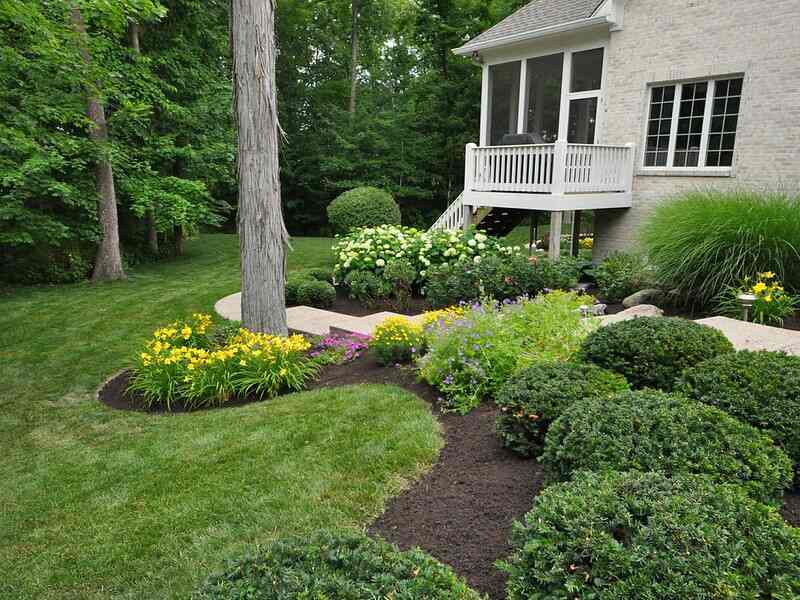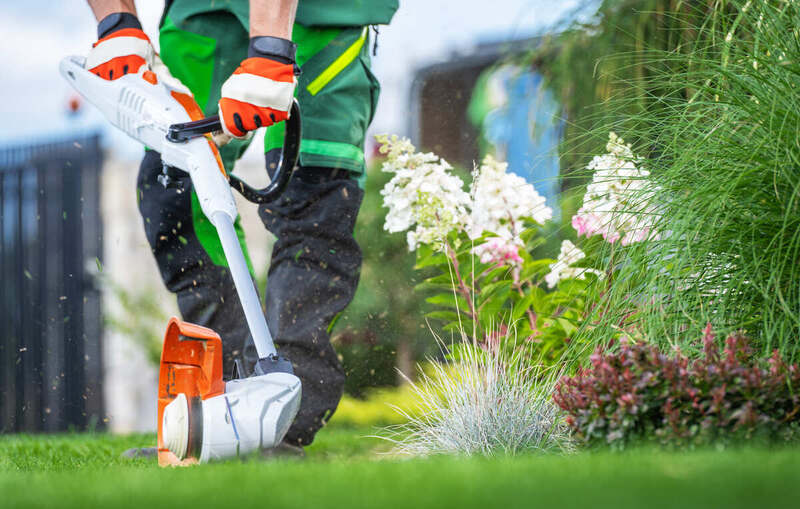
Just when you thought your garden was ready for its magazine cover debut, there they are: weeds, the intruders of the plant world. From mulching to the art of proper maintenance, learn how to prevent weeds in your flower beds.
Discover how to use landscape fabric and ground cover plants to avoid the presence of weeds in your garden. Ready to explore the five tips to keep your flower beds weed-free and fabulous?
1. Mulching Flower Beds

One effective method for keeping weeds at bay in your flower beds is through the strategic use of mulch. But what exactly is mulch? Think of it as a protective blanket for your soil, made from a variety of materials such as grass clippings, cocoa hulls, plastic, or stones.
Weeds, like many plants, need sunlight to thrive. By spreading a layer of mulch over your flower beds, you create a barrier that blocks sunlight from reaching the soil surface. This act denies weeds the energy they need to sprout and grow.
Whether you opt for organic mulches, which enrich the soil as they break down, or inorganic mulches for a longer-lasting solution, the choice depends on the specific needs of your flower bed (see our article, “Mulch Guide: Types, Pro Tips and Where to Mulch”).
2. Edging Your Flower Bed

Another effective strategy in the battle against weeds infiltrating your flower beds is edging. By creating a well-defined edge around your flower beds, you establish a boundary that makes it more difficult for weeds to encroach from the lawn (such as bermudagrass; see “How to Keep Bermudagrass Out of Flower Beds”). This physical barrier acts as a deterrent, slowing down the spread of weeds.
Edging not only serves a practical purpose but also adds a nice touch to your garden, giving it a polished and organized look. Whether you opt for traditional trench edging, decorative stone borders, or plastic or metal strips, the key is to maintain a barrier that is sturdy and clearly delineated to keep weeds away (Check out this article: “Garden Edging 101: Ideas and Tips for DIY Installation”).
3. Installing Landscape Fabric

For those seeking a low-maintenance solution to weed control in their flower beds, landscape fabric can be a good ally. This geotextile, crafted from materials such as polyester, linen, polypropylene, or other recycled materials, serves as a barrier against weed growth (see “Landscape Fabric Types and How to Use Them”).
Landscape fabric works by covering the soil in your garden. It stops sunlight from reaching weed seeds, so they can’t grow. But it still lets water and air through, so your flowers stay healthy. Check out our guide, “How to Install Landscape Fabric.”
4. Using Ground Cover Plants

Looking for a natural way to keep weeds out of your flower beds? Consider ground cover plants. These low-growing plants not only add beauty to your flower bed but also serve as opponents to weeds.
Dense evergreen ground cover plants are champions in the battle against weeds. When planted closely together, they form a thick, weed-suppressing mat that effectively blocks out sunlight and chokes out weed growth. Check out our article, “Best Ground Cover Plants.”
5. Maintaining Your Flower Bed

When it comes to keeping your flower beds free from weeds, nothing beats the power of proper maintenance. By staying on top of tasks like watering, fertilizing, and choosing the right plants, you can create an environment where weeds struggle to take root.
- Watering: Overwatering can weaken your plants and create ideal conditions for weeds to sprout while underwatering can leave your plants stressed and vulnerable. Finding the balance and watering your flower bed appropriately helps your plants stay strong, making it harder for weeds to invade.
- Nutrients: Just like humans need a balanced diet to stay healthy, plants need proper nutrients to thrive. Fertilizing your flower bed with the right nutrients helps your plants grow strong and resilient, making them better able to compete with weeds for resources.
- Aeration: Aerating the soil in your flower bed promotes healthy root growth and improves the overall health of your plants.
- Choosing the Right Plants: Selecting plants that are well-suited to your climate and soil conditions can make a big difference in weed prevention. Plants that are well-adapted to their environment are more likely to thrive, leaving less space for weeds to grow.
FAQ About Weed Prevention
How can I get rid of weeds in my flower beds?
Try hand-pulling for small infestations. When hand-pulling, remove the entire plant, including roots, and pull when the soil is moist. For larger infestations, use herbicides. Here’s a list of the best weed killers for flower beds.
Do herbicides kill flowers too?
Non-selective herbicides will kill everything they touch: weeds, grass, flowers, and plants. In contrast, selective herbicides are formulated to target specific weeds without harming your grass.
Take a look at the following articles about herbicides:
What is a pre-emergent herbicide?
A pre-emergent herbicide is applied before weeds germinate. Its function is to prevent weed seeds from sprouting and growing, stopping them before they become visible.
If you missed the window to prevent weeds, check out these tips to get rid of weeds in flower beds.
Hire a Landscaping Professional
Flower beds can be the crown jewels of your yard, adding color and beauty that make you smile every time you look out the window. If you need assistance with mulching or weed removal in the flower beds, contact a local landscaping professional to handle the job for you.
Main Image Credit: johnalexandr / Adobe Stock / License





